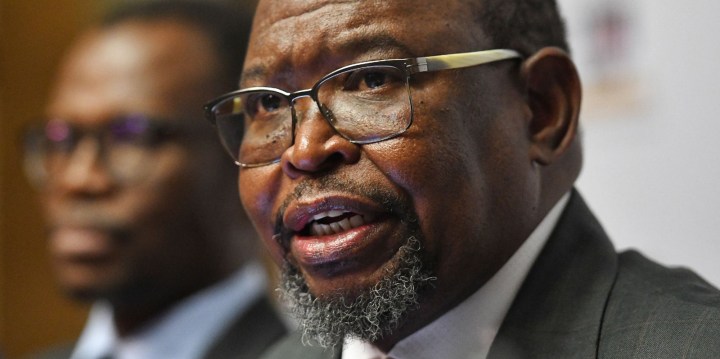BUDGET 2023
First primary surplus in 15 years, but Eskom debt bailout is dragging down the national balance sheet

Amid an impossible storm of rising interest rates, steep inflation and a cost-of-living crisis, Finance Minister Enoch Godongwana has submitted a Budget with a primary surplus – a surplus of income over expenditure excluding interest payments on outstanding government debt. This is the first time in 15 years that the Budget has had a primary surplus, which is expected to reach 1.7% of GDP in 2025/26.
The consolidated budget deficit in the year ahead will narrow to just 4% of GDP, its lowest level since the Covid pandemic hit South African shores, moving to 3.2% in 2025/26. It will come in at 4% this year.
The bad news is that servicing debt will take up an increasing share of government resources, with debt-service costs increasing from 18% of main budget revenue in 2022/23 to 19.8% in 2025/26 and averaging R366.8-billion a year over the medium term.
A big part of this can be attributed to the government moving R254-billion of Eskom debt onto the national balance sheet. While this move will give the beleaguered utility some breathing space, it shifts the needle on government debt to a steeper downward trend, starting at R6-trillion or 74% of GDP in 2025/26.
See the Budget in a box: Fuel levy, carbon tax and economic development
This is deeply worrying. Income tax collection tailwinds in 2022 have actually allowed South Africa to move closer to a balanced primary budget, which means that government revenues should be sufficient to cover its non-interest expenditures.
Thalia Petousis, portfolio manager at Allan Gray, says that in such a setting it is theoretically easier for the government to fund itself in the event that every bondholder simply reinvests all coupons they receive. However, she points out that problems can easily arise where interest costs escalate enormously. “A case in point is the Ghanaian government, which achieved a primary surplus but has not been able to cope with the rising cost of servicing interest on their debt, leading to an effective default,” she says.
Arthur Kamp, chief economist at Sanlam Investments, says that while the Budget maps a path to debt stabilisation and ultimately a lower debt ratio beyond the medium term, the government’s track record in sticking to the fiscal consolidation path is patchy. “As it stands, the inability to deliver sufficient electricity supply continuously and the implied deterioration in trend economic growth and per capita incomes are likely to prompt S&P to reassess its positive outlook on South Africa’s sovereign credit rating,” he says.
There has been a substantial improvement in tax compliance, which contributed R1.8-trillion or 84% revenue to the government’s coffers. As Nazrien Kader, head of tax at Old Mutual Group, observes, “if there is any upside to the load shedding crisis, it is in the not-insignificant proportion of tax stealthily collected – almost a third for every R1 spent on fuel in the form of the general fuel levy and the Road Accident Fund levy – as businesses and households scramble to run generators to keep going”.
Estimated tax revenue for 2022/23 has been revised upwards to R1.7-trillion, R94-billion higher than previous estimates, and moves to an estimated collection of more than R2-trillion in the 2025/26 financial year.
State-owned enterprises get financial support from Godongwana despite ‘tough love’ approach
National Treasury estimates that the economy has grown 2.5% in real terms over the past year, but the country’s persistent power crisis has undercut the forecast for GDP growth to 0.9% in the year ahead, with Treasury pinning hopes of 1.8% growth in 2025. Treasury’s acting director-general, Ismail Momoniat, notes that a clear and stable macroeconomic framework is required to support investment. “Reforms to cut red tape, improve efficiency and encourage investment are under way, with a focus on electricity and transport. But faster implementation is needed to lift economic growth,” he says.
In line with this, government spending on infrastructure is estimated at R903-billion over the next three years, of which R302-billion will go towards state-owned entities, and R3.7-billion will go towards approved projects to improve municipal water infrastructure, with implementation on pause until the 2023 Appropriations Bill is enacted.
Total consolidated government spending will amount to R7-trillion over the next three years, of which 51% or R3.6-trillion is allocated for the social wage, including R36-billion for the extension of the Covid-19 Social Relief of Distress grant until 31 March 2024. All other social grants have been increased in line with inflation. Almost 20 million South Africans will receive social grants by March 2026.
Learning and culture takes the lion’s share of government spending at R1.43-trillion, more than 24% of the total Budget, while health gets 14% or R809-billion. BM/DM

















 Become an Insider
Become an Insider
Comments - Please login in order to comment.